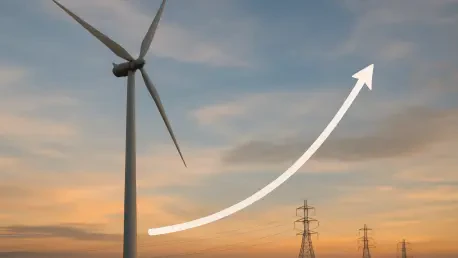Understanding the Current Energy Landscape
The U.S. power market stands at a pivotal moment in 2025, with electricity underpinning nearly every facet of the national economy, from industrial output to household comfort. As a cornerstone of daily life, the sector influences job creation, technological innovation, and environmental progress, supporting a complex web of stakeholders. Its stability and adaptability are critical to sustaining growth amid rising demands and shifting priorities, making it a focal point for strategic planning across public and private domains.
This market comprises several key segments, including energy production, capacity reserves, ancillary services for grid stability, and renewable attributes like credits for clean power. Major players such as utilities, investors, developers, and policymakers shape its trajectory, each with distinct roles in balancing cost, reliability, and sustainability. Utilities manage distribution, investors fund new projects, developers drive innovation, and policymakers set regulatory frameworks that guide long-term outcomes.
Technological advancements and federal policies play significant roles in defining current dynamics. Breakthroughs in energy storage and grid management enhance efficiency, while legislation like the Inflation Reduction Act has spurred investment in clean technologies. These forces create a landscape of opportunity and challenge, pushing the industry toward modernization while navigating economic and environmental trade-offs that will resonate for decades.
Key Trends and Market Drivers
Structural Demand Growth and Emerging Pressures
Electricity demand in the U.S. is surging, fueled by transformative shifts in technology and lifestyle. Data centers, particularly in regions like northern Virginia, are a primary driver, with their exponential growth pushing peak loads in the PJM region to unprecedented levels. This trend, coupled with the electrification of transportation through electric vehicles, signals a structural shift that is reshaping consumption patterns across the nation.
Industrial expansion and climate-driven needs for cooling during hotter summers further amplify this demand. These pressures create fertile ground for investment in new generation capacity and infrastructure upgrades, as aging systems struggle to keep pace. However, the strain on existing grids highlights a critical need for robust planning to prevent bottlenecks and ensure consistent supply.
Regional impacts vary, with some areas facing more acute challenges. The data center boom in northern Virginia, for instance, not only tests local resources but also serves as a microcosm of broader national trends. Addressing these pressures requires innovative solutions and substantial capital, positioning the sector at a crossroads of risk and opportunity as it adapts to an electrified future.
Market Projections and Price Forecasts
Detailed forecasts for 2025 and beyond reveal significant shifts in energy and capacity pricing across major U.S. markets like ERCOT, PJM, and MISO. Projections indicate a notable rise in ERCOT’s average annual energy prices, with increases ranging from $15 to $30 per megawatt-hour between 2026 and 2035, driven by policy adjustments and evolving cost structures for renewable resources. These figures underscore a tightening market where supply struggles to match accelerating demand.
Several factors contribute to these price trends, including federal policy changes and the fluctuating economics of clean energy deployment. As incentives shift, the financial landscape for wind and solar projects adjusts, influencing long-term investment decisions. These forecasts provide a critical lens for understanding how market fundamentals will evolve over the next three decades, offering clarity amid uncertainty.
The implications of these projections are profound for resource planning. Investors and developers must weigh the risks of rising costs against the potential for high returns in high-demand regions. Meanwhile, utilities face the task of aligning infrastructure investments with predicted price curves, ensuring that capacity meets future needs without overburdening consumers or compromising grid stability.
Challenges in Meeting Future Energy Needs
The path to satisfying escalating energy demands is fraught with obstacles, particularly in the realm of natural gas generation. Limited manufacturing capacity for gas turbines, combined with extended deployment timelines, restricts the ability to scale up quickly. Even with significant allocations of global production, supply shortfalls loom large, necessitating alternative strategies to bridge the gap.
Renewable energy, while a cornerstone of clean power goals, faces its own hurdles with rising costs. Policy shifts, such as the expiration of key tax credits under recent federal budgets, alongside supply chain disruptions, elevate the financial burden of wind and solar projects. These challenges threaten to slow the pace of adoption at a time when speed is essential to meet both demand and emissions targets.
Potential solutions lie in a multifaceted approach. Accelerating the rollout of renewable technologies through streamlined permitting and incentives could help offset delays. Additionally, diversifying the resource mix to include emerging options like advanced storage, alongside targeted investments in grid infrastructure, offers a pathway to resilience. These steps demand coordinated effort across sectors to transform barriers into actionable progress.
Policy and Regulatory Impacts on Power Pricing
The regulatory environment is a powerful force in shaping power pricing, with federal policies setting the tone for market behavior. Recent budget reconciliation measures have altered the landscape for clean energy incentives, adjusting tax credits and tariffs that directly impact project costs. Such changes ripple through the industry, influencing everything from investment timelines to consumer rates.
Regional variations add another layer of complexity to this framework. In California, stringent renewable mandates drive up demand for solar and storage, pushing associated costs higher while fostering innovation. These localized policies create distinct market conditions, requiring tailored approaches to balance compliance with affordability in different parts of the country.
Compliance with reliability standards remains a critical concern, as does the emergence of new regional markets like the Extended Day-Ahead Market and Markets+ in the Western Electricity Coordinating Council. These platforms aim to enhance wholesale pricing transparency and efficiency, but their success hinges on broad participation. Together, these regulatory and market developments will play a decisive role in determining how power prices evolve over the coming decades.
Future Outlook for Energy Markets
Looking ahead, the U.S. power sector is poised for transformation, with innovations like battery storage and offshore wind holding potential to redefine the energy mix. These technologies promise to address intermittency issues and expand capacity in coastal regions, offering scalable solutions to meet growing needs. Their adoption, however, depends on overcoming technical and financial hurdles through sustained investment.
Market disruptors, such as tightening reliability in capacity markets like PJM, MISO, and NYISO, add urgency to these efforts. Coupled with the relentless growth of data centers reshaping demand profiles, these factors signal a period of heightened risk and opportunity. Navigating this landscape will require agility from stakeholders to adapt to rapidly changing conditions.
Global economic trends, regional coordination, and consumer preference for sustainable energy further influence long-term growth areas. As international pressures shape resource availability and costs, domestic collaboration between markets becomes essential. Meanwhile, public demand for cleaner options continues to push the industry toward greener practices, setting the stage for a dynamic and evolving future in energy markets.
Conclusion and Strategic Recommendations
Reflecting on the insights gathered, it becomes evident that power prices play a central role in steering the energy sector’s path over the explored horizon. The balance between unprecedented demand growth and ambitious clean energy targets emerges as a defining challenge, with each trend and forecast underscoring the need for proactive measures.
Moving forward, stakeholders should prioritize diversified resource planning, integrating a mix of renewables, storage, and firm capacity to mitigate risks. Strategic investments in grid stability and emerging technologies are identified as crucial steps to ensure reliability amid evolving pressures. Additionally, fostering regional collaboration and advocating for supportive policies could unlock new avenues for growth.
These actionable strategies, grounded in comprehensive market forecasts, offer a roadmap for navigating the complexities ahead. Emphasizing adaptability and forward-thinking approaches, the focus shifts to building a resilient energy framework that can withstand future uncertainties while capitalizing on transformative opportunities.









